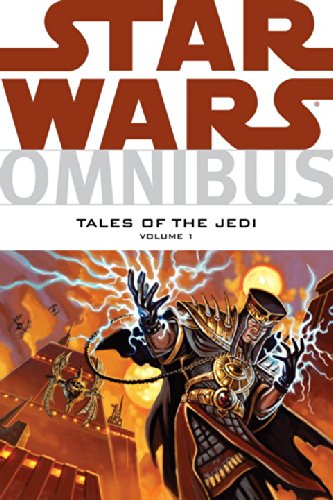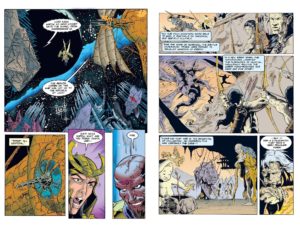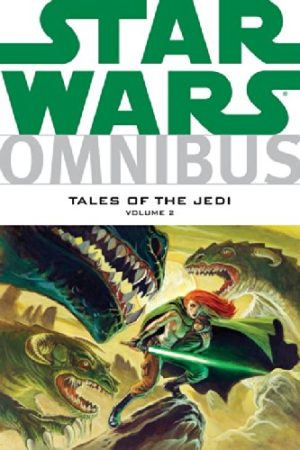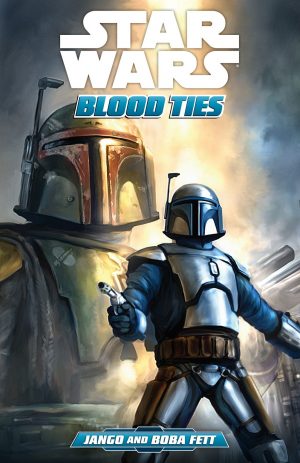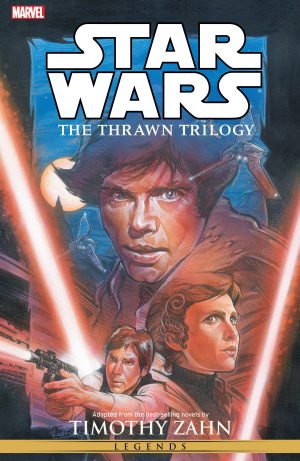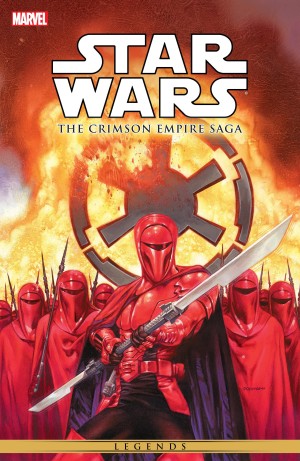Review by Ian Keogh
In over twenty years of Dark Horse continuity only three Dawn of the Jedi graphic novels delved further back into the Star Wars timeline than the first two trades collected here. The Golden Age of the Sith and The Fall of the Sith Empire form one continuous story set roughly five thousand years before the Luke Skywalker era, and a thousand years before the other tale, Knights of the Old Republic.
Those earliest stories are very much the missed opportunity on the part of writer Kevin J. Anderson, as despite being set millennia before the Luke Skywalker era there’s very little difference in terms of scope and themes. The technology’s no more primitive, and the plot could really be set in any era, the only aspect marking it as different being that the Sith are considered a myth, the wielders of the Force for dark purposes having been vanquished so long before. It’s the search for a more rapid trade route through which they’re able to emerge once more, finding their way back to threaten the Republic. It’s nice to see the primary Jedi as someone other than a human for once, and the devious machinations as the post of Dark Lord becomes vacant are fun, but otherwise there’s little to distinguish this from any other Star Wars adventure. It’s also a fatal flaw to title the concluding five chapters The Fall of The Sith Empire, instantly jettisoning much possible suspense.
The best creative effort over the first two connected stories comes from primary artist Dario Carrasco. He’s a little rough around the edges, but puts a full shift into every scene. There’s not a page where he slacks off, supplying an amazing amount of design work to bring parades, palaces, battles and more general locations to life, and while he inherits some characters designed by Chris Gossett over the opening two chapters he still creates many others.
Gossett is an artist who loves the technology, but doesn’t care much for the people, so the cost of being able to marvel at his space scenes is rushed and crowded sequences linking them. He’s good at designing aliens, also seen on the Knights of the Old Republic sequence, actually drawn five years before the other material. In that he begins the story of Ulic Qel-Droma, a talented, but reckless Jedi destined to take one hell of a journey in Volume 2. We’re also introduced to Nomi Sunrider, described as being attuned to the Force, but too timid to open herself to it. Janine Johnson illustrates her introduction, but her flourishing is under David Roach, who provides the best art here, channelling the classic elegance of Al Williamson.
For the last section Tom Veitch takes the time to explore the era, giving the background, the history and the new political realities of a galaxy now a thousand years on from that of the Sith dominance. There’s a generic nature to much beyond that, but Veitch is deliberately setting up expectations for what’s to follow, and to some extent that requires a sense of familiarity.
Originality is at a premium, but the art goes a long way to ensuring cosily familiar plots have a fresh glow.
